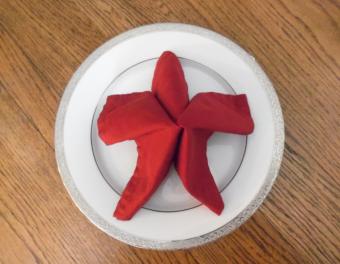
Origami flying birds provide a sense of action. Some birds flap their wings, others fly like paper airplanes, and a few simply pose to suggest flight.
Flying Crane: An Origami Classic
The crane card tutorial is based on the classic origami crane, in which the crane looks like it has wings that may actually flap when you pull gently on its tail. Origami-instructions.com has straightforward and well-illustrated instructions for a crane with flapping wings. Even origami beginners will be able to complete this action piece, which starts with the standard origami bird base.
Step-by-step instructions for making a flying crane, which flaps its wings, are also available on YouTube. You may wish to experiment by changing the shape of the heads and tails of these birds to produce other types that flap their wings.
Flying Birds and Related Creatures
Flying origami birds do not have to be cranes. Instead, fold another fine-feathered creature found in nature, or fold a fantastical bird from prehistoric times or mythology.
Birds
You can use folding techniques similar to those used for paper airplanes to create flying birds. When you throw these birds, they glide through the air as if they were really flying:
Prehistoric Flying Creatures
Prehistoric Origami: Dinosaurs and Other Creatures by John Montroll, a leading origami artist and author, includes directions for the prehistoric flying animals listed below. These prehistoric animals are likely predecessors of today's birds. Although this book is out of print, it is readily available from a number of used bookstores; it may also be available at your local library.
- Pteranodon
- Pterodactylus
- Quetzalcoatlus
- Rhamphorynchus
Fantasy and Mythological Creatures
Two books by Duy Nguyen, Paper Creations: Mythical Creature Origami and Fantasy Origami, include instructions for a Phoenix. Fantasy Origami also contains directions for a wild duck, as well as a flying fox and Pegasus (a flying horse). LoveToKnow Origami also has directions for an origami Pegasus. Dragons, Witches, and Other Fantasy Creatures in Origami by Mario Adrados Netto has directions for making a flying bat, a flying serpent, a griffin, a winged demon, a flying dragon with a warrior and a flying dragon with a wizard.
Origami Bird Mobile
The web site Instructible.com has illustrated instructions for an origami bird mobile. The birds are relatively simple song birds, and the end product is very pleasing.
Paper for Origami Flying Birds
Origami flying birds, such as the crane that flaps its wings, can be made from a variety of paper. Traditional origami paper works perfectly for small and medium-size birds. Other light-weight paper, including gift wrap, is a good choice for the crane. Use heavier paper so that the wings have sufficient weight to stand out from the bird's body when making larger birds. Plain-colored paper, paper with a different color on each side, and patterned paper all work well for the flapping crane. Plain paper may also be decorated with crayons, markers, or paint to give the bird color and texture.
For any of the birds that fly like paper airplanes, you'll want to select paper at least the weight of light copier paper. The finished pieces need some weight and substance to fly successfully. If the paper you use for these birds is too light, they may be caught in drafts.
For the prehistoric "birds," the sky's the limit when it comes to color and texture of the paper used when making the folded paper birds. Because the folds for these creatures can be fairly complex, you will probably want to start with a fairly lightweight paper at least 7 inches by 7 inches. If you work with very small or heavy paper, it may be hard to get the sharp creases needed for these pieces. Fantasy birds and their cousins are products of imagination; therefore, bright and intense colors and patterns are just as suitable as are more subdued solids for these creatures.
If you want to make origami flying birds, you can select designs for birds that simply give the illusion of flight from their poses, you can make birds with wings that flap, and you can make birds that really glide through the air. Once you learn the basics of each type of bird, you may want to experiment with variations on each figure.







